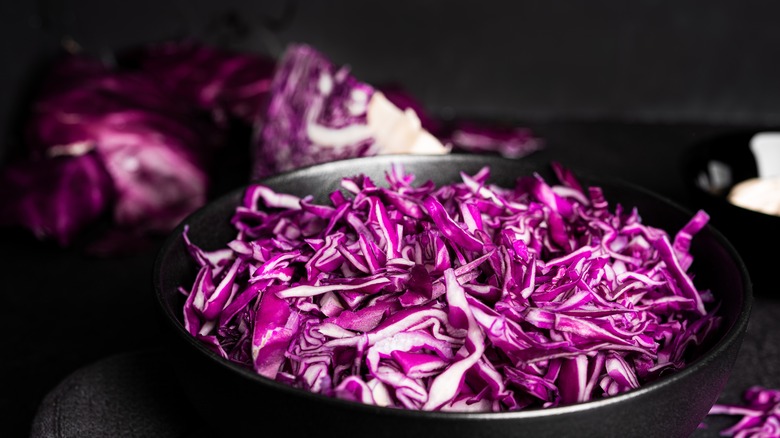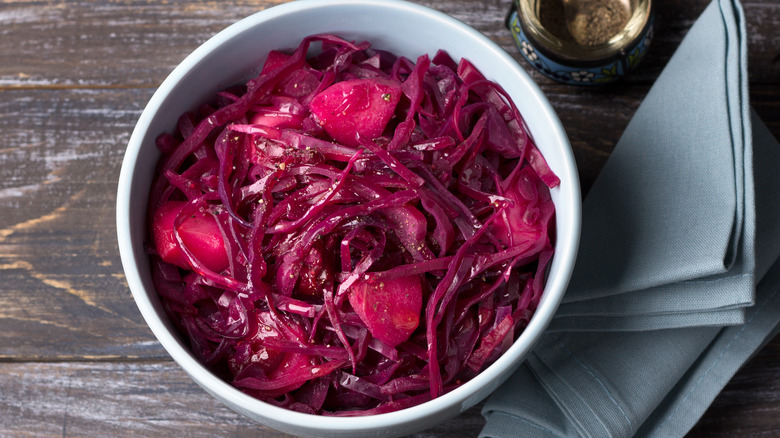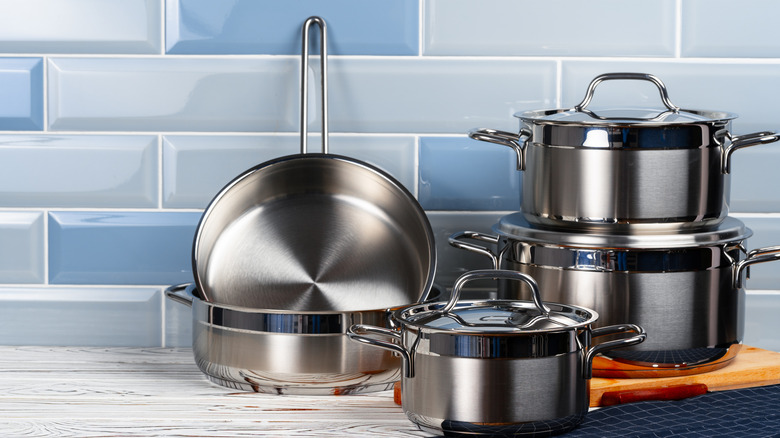Simple Tricks To Preserve Red Cabbage's Vibrant Color When Cooked
One of the most attractive features of red cabbage — besides its hefty nutritional content – is its almost-neon purple coloring. This bright color only gets more beautiful as you peel off each layer of the cabbage, so it's important that it doesn't go to waste when it's cooked.
According to How Stuff Works, the purple pigment that gives red cabbage its vibrant color is a molecule known as anthocyanin. This is the same pigment that gives blueberries their color as well. But how is one pigment able to paint two foods different colors?
Anthocyanin is a unique pigment molecule because the color it expresses is determined by its acidity level. It's so responsive in fact, that you can use water dyed with red cabbage as a type of pH strip to test acidity. Science Sparks recommends using baking soda and vinegar to control the acidity in red cabbage water as a simple science experiment with kids to see how many hues can come from this one compound.
The downside to this fun, quirky molecule though is that it also affects the appearance of red cabbage as it cooks. Cooked red cabbage often turns blue, and that beautiful purple tone is lost. Thankfully, there are ways to prevent this from happening.
Adding acid
One of the easiest ways to keep your red cabbage from turning blue when you cook it is to control its acidity level. Delishably says that by adding a bit of a mild acid like lemon juice, you can slightly boost the acidity of the vibrant vegetable. Healthline says that most tap waters have an average pH of seven which means that it is neutral, but this still raises the alkalinity of the red cabbage. If you choose to braise cabbage in water or add some to the pan while it cooks, it will reduce the acidity. Simply adding lemon juice will balance things out and help preserve the cabbage's striking color.
Delishably adds that the final color of your cooked cabbage will depend entirely on how much acid you choose to add. Adding more acid can result in hot pink tones, light red, or simply maintain its purple color. For visual eaters, it might be worth it to experiment with different acids to determine the preferred balance of colors and flavors.
Use the right tools
To help preserve that beautiful color, you should also avoid any reactive metals while you prepare red cabbage, per Bon Appétit. That means that it is best to use stainless steel blades when you cut the cabbage and make sure your cookware is nonreactive as well. Blue Flame Kitchen says that nonreactive pans include enameled cast iron and stainless steel cooking surfaces.
Using nonreactive cookware can benefit other dishes as well. Kitchn says that it's best to use a nonreactive cooking surface because certain foods — like tomatoes — may take on a tinny or metallic flavor from being cooked in reactive pots and pans. Unlike cast iron or aluminum, nonreactive metals won't react to acidic ingredients and affect their preparation.
Decoding Delicious also points out that if you unwittingly expose your cabbage to a reactive metal and find that its color has changed, it can still be redeemed. Because of the anthocyanin's unique properties, you can still correct the pigment by adding acid back into the recipe while it's cooking. While it's best to get it right the first time, this trick might just save a spoiled batch of red cabbage.


